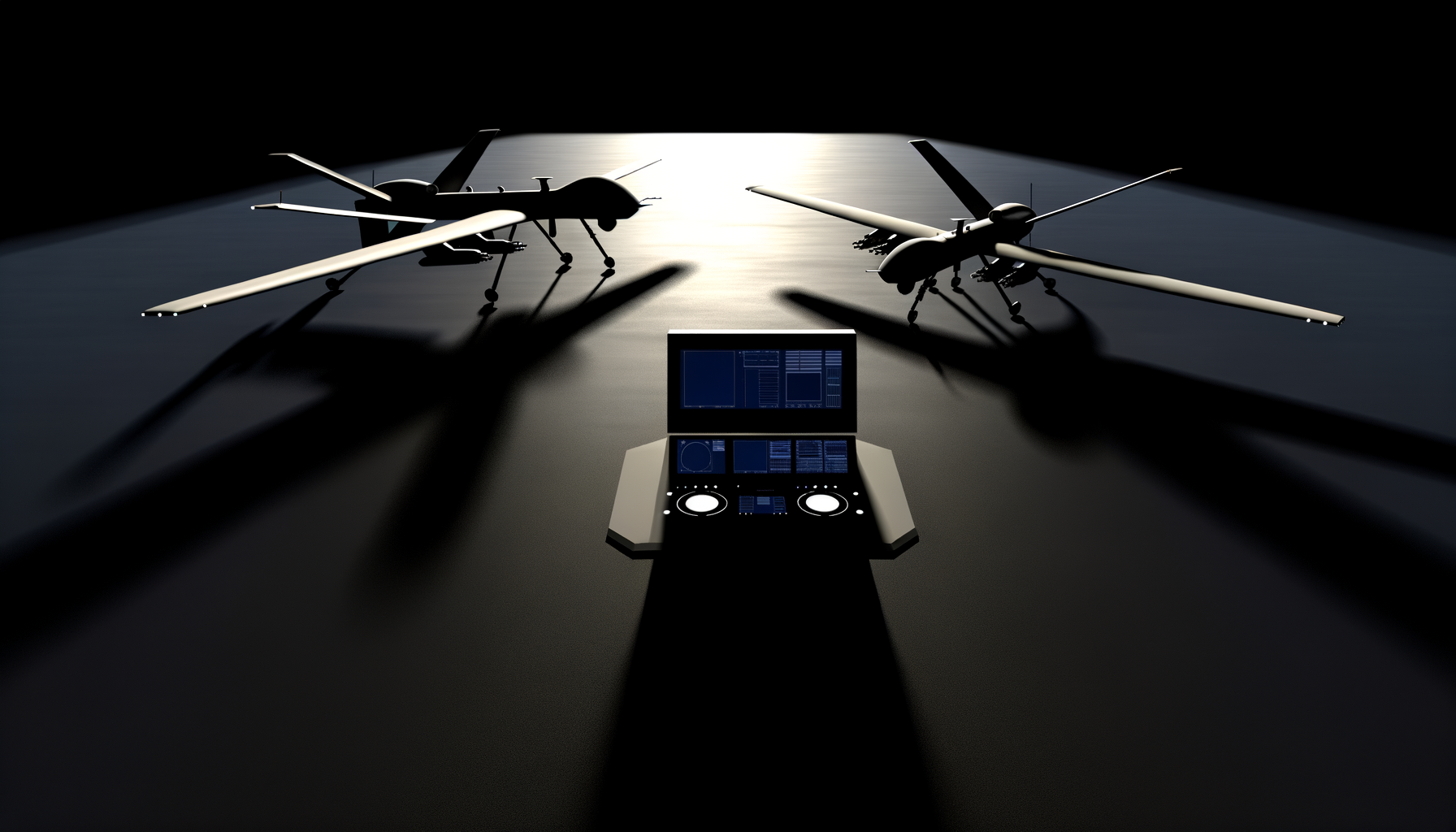Are we witnessing the last generation of human combat pilots? The arrival of AI-piloted war machines signals a new era that few understand and many underestimate.
The End of Human Pilots? Dissecting the Silent AI Takeover
The thunder of jet engines and the bravado of skilled pilots have long dominated the mythology of air combat. But as of 2024, defense insiders are quietly admitting the unthinkable: algorithms may soon replace ace pilots—not just augment them. Shield AI’s unveiling of X-BAT, a VTOL fighter controlled entirely by onboard AI, and DARPA’s sustained push for autonomous air combat programs, are no longer experiments or science fiction. They are operational realities, rewriting doctrine in real time.
From Guidance to Command: The Leap from AI Assistance to Full Autonomy
For years, AI in military platforms acted as a force multiplier—supporting navigation, decision aids, and target selection. The new imperative is full autonomy. What’s truly monumental about platforms like the X-BAT is not that they fly themselves, but that they fight, maneuver, and adapt independently, under extreme uncertainty and in contested environments.
“The leap from AI assistance to mission autonomy is not evolutionary—it’s strategic discontinuity. Those who fail to adapt will be outmaneuvered, out-cycled, and outclassed.”
Competing for Air Superiority: The Quiet Revolution in Tactical AI
The operational edge is moving from hardware superiority to algorithmic superiority. Traditional jets, no matter how advanced, are limited by human G-tolerance and cognitive bandwidth. AI-piloted craft operate with split-second decision loops, react to threats even before they’re fully visible, and hack the OODA loop (Observe-Orient-Decide-Act) beyond human limits.
- Instant threat assessment: AI can identify, prioritize, and counter multiple targets in parallel, with no fatigue or hesitation.
- Unpredictable maneuvering: Non-inertial vectoring, micro-adjustments at supersonic speeds, and evasion patterns unconstrained by human training.
- Swarm tactics: AI platforms coordinate as distributed teams—overwhelming defenses with emergent behavior beyond pre-scripted doctrine.
Case in Point: The Metrics of Autonomous Dominance
Recent simulated engagements by DARPA’s AlphaDogfight program showed AI-piloted agents outmatching experienced human pilots in over 90% of dogfights. In Shield AI trials, machine response times were measured at sub-100 milliseconds—compared to the roughly 250 ms response latency of the best human pilots. No emotion, no blackouts, no loss of focus under G-forces.
Operational and Infrastructure Disruptions: Rethinking the Backbone of Combat
What does it take to field, sustain, and deploy such AI-piloted systems at scale? The requirements are redefining defense infrastructure from the ground up:
- Data logistics: Real-time ingestion of tactical data, continuous learning, and secure model update pipelines—operational “in the wild”.
- Edge compute: Onboard AI hardware must pack cloud-level inferencing, forced into the power, space, and cooling constraints of an agile drone or fighter airframe.
- Network resilience: Autonomy means survival in GPS-denied and comms-contested environments—full local decision-making, with no tele-operations safety net.
The new paradigm is not platform-centric, but AI architecture–centric. Rapid updatability, continuous validation, and ‘explainability on demand’ are shaping military procurement and software assurance at all levels.
What Few Consider: Supply Chain, Accountability, and Interoperability
Deploying AI fighters exposes blind spots even experts overlook. Consider:
- Standardization nightmares: How do you guarantee interoperability across U.S. and allied AI platforms if their learning histories diverge?
- Mission accountability: When an autonomous jet acts catastrophically, who bears command responsibility: its programmer, operator, or the AI engine itself?
- Spoofing and adversarial resilience: How resistant are these AIs to data poisoning or decision-hijacking by hostile actors?
Ethics on the Frontline: Is Automated Lethality Acceptable?
If an AI system can trigger weapons with no human-in-the-loop, the battlefield is no longer constrained by the threshold of human ethics or emotional hesitation. This raises critical questions:
- How are rules of engagement coded into machine learning models?
- How is proportional response ensured when the pace of combat exceeds comprehension?
- Who audits on-the-fly targeting decisions—especially in crowded, ambiguous theaters?
2025 and Beyond: The Real Stakes for Defense AI Infrastructure
What’s next is not a mere race for smarter drones, but for secure, scalable, and trustworthy AI ecosystems. This will take the form of sustained investments in:
- Verifiable AI safety mechanisms
- End-to-end simulation and test ranges for synthetic adversarial scenarios
- Automated compliance and after-action explainability tools
- Resilient, exfiltration-proof AI supply chains and model provenance tracking
By 2025, defense leaders who treat AI as bolt-on code instead of a core warfighting substrate will pay a steep price. National security will depend not only on fighting the last battle faster, but on fighting the next battle better—by code, data, and machine willpower.
Your Next Steps: Tactical AI is Infrastructure
- Examine your organization’s AI operational readiness—from compute infrastructure to algorithmic auditability.
- Develop playbooks for AI red-teaming and adversarial testing.
- Push for AI system standards and coalition interoperability as strategic policy, not just tech compliance.
The actors able to own, control, and evolve their autonomous AI infrastructure will set the battle tempo—for everyone else, adaptation will be forced under fire.
The tactical advantage in military AI is shifting from the brilliance of a few pilots to architecting, safeguarding, and out-innovating entire intelligent infrastructures—those who prepare now will dominate the battlespace of the 2020s.





